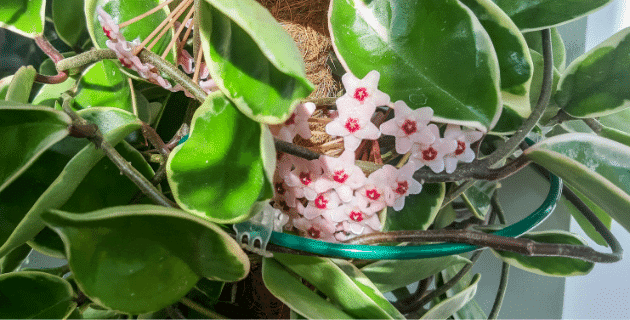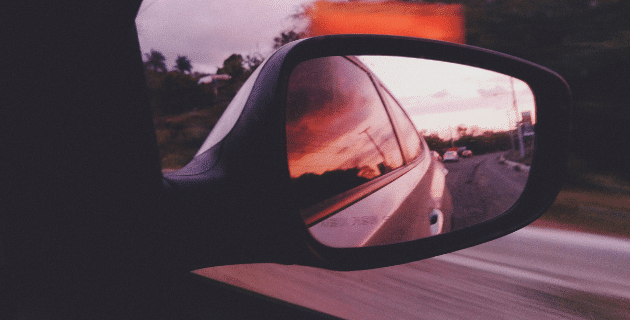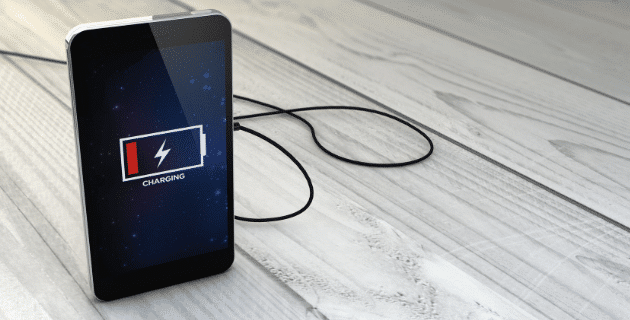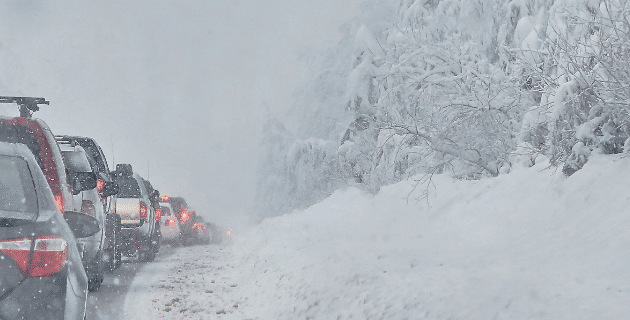
by California Casualty | Calcas Connection, Safety |
If you’ve ever wrestled a wriggling, uncooperative toddler while trying to apply sunscreen, you’re not alone. It’s summer and the kids are excited, which means sun safety sometimes falls by the wayside. Even your older kids may ditch their hats and sunglasses to bask in the sun or they may “forget” to reapply sunscreen after a swim.
Yet it’s so important to protect young skin, which is especially vulnerable to the sun’s damaging rays. Just one or two blistering sunburns can double your child’s lifetime risk for melanoma, according to MD Anderson Cancer Center. Given the high stakes, how are you possibly going to get your kids to practice sun safety? Don’t worry. Unlike the sunscreen-on-the-toddler scenario, we’ve got you covered.
1. Get them into the habit of applying sunscreen.
Whether it’s cloudy or sunny, make sunscreen a part of your – and their — daily routine. Choose a broad-spectrum sunscreen that protects against both UVA and UVB rays with a Sun Protection Factor (SPF) of at least 30.
Note that children’s sunscreens often have the same ingredients as adult versions. They’re just packaged in a cuter bottle. If that cute bottle gets your child to apply it, it’s worth the investment. The bottom line: the best sunscreen is the one your child agrees to wear.
-
- Lead by example and apply sunscreen yourself at least 30 minutes before you go outside. Depending on your child’s age and ability, help or encourage them to do the same.
- For younger kids, make it fun.
- Put “cheetah” spots of sunscreen and have them rub them in.
- Pretend the sunscreen spray is a dragon’s breath.
- Set a timer and count down together. Sing a song that lasts as long as the application.
- Ask them to stand in front of a mirror and watch to see if you’ve missed a spot.
- For older kids, add sunscreen to their daily chore chart.
- If your child is sensitive to the feel of sunscreen, try different types. Sunscreen comes in spray, stick, and lotion and can be thick or thin, scented or unscented.
Pro Tip: Check the active ingredients, and look for zinc oxide or titanium dioxide. These sunblock ingredients are less irritating if your child has sensitive skin.
2. Teach your child when to reapply sunscreen.
If you’re out in the sun, you’re going to want to reapply your sunscreen to avoid burning. A good rule of thumb is to reapply when kids are wet and sweaty, after swimming, or before the timeframe stated on the sunscreen label. Remember to use a waterproof sunscreen that won’t come off in the pool or when they sweat and that sunscreens need about 30 minutes to absorb into your skin so account for the overlap time.
-
- For older elementary kids and teens, have them set a timer.
- For younger kids, give them a few minutes warning. Then ask where he or she wants to be when you reapply. Having a choice gives them some control and encourages cooperation.
- Schedule reapplication right before a break for a favorite snack. (Snacks after sunscreen!)
3. Let them choose their sun protective wear.
Sun protective clothing, hats and sunglasses help keep dangerous rays away from sensitive eyes and skin. Involve your child in the choice so that they are more likely to wear the item.
-
- Go shopping with your child for hats, sunglasses, and sun-protective clothing. Let them pick out an ensemble…. even if it doesn’t match (sorry, moms!).
- Consider UV blocking shirts that provide added protection. Avoid tank tops that expose kids’ shoulders.
- Find a pair of sunglasses that fit your child well. Add a strap that will keep them in place during energetic play.
- Model wearing your own protective sun gear. Young children might enjoy a matching set! Older kids may be more likely to enjoy “trendy” sunglasses or hats. So, look for ones that have their favorite character or celebrity on the package.
4. Know when to go out and when to seek shade.
The sun’s rays are strongest during midday. Encourage your child to stay out of the sun during the hottest times. Sun safe hours are before 10 am and after 4 pm; that’s when you can offer unlimited outdoor play. During other times, you will want to limit your child’s time in the sun and encourage them to seek shade when possible.
-
- Play the shadow game. If your child’s shadow is shorter than he/she is, it means it’s time to find shade. Challenge your child to find all of the shady spots nearby.
- Set up a shady play area. Include drinks, snacks, games, chalk, balls, dolls, and even a water table to entice children to stay there. For the beach or places where there is no shade, play tents and sun canopies can protect from UVA and UVB rays.
- Summer rides in the car can also expose your child to dangerous UVA rays which pass right through glass. Add transparent window films to your car windows or provide a light blanket to cover your child’s exposed legs.
5. Explain sun safety in an age-appropriate way.
You want your child to understand why sun safety is important. That ultimately will help them to practice it. Do it in a way that your child can understand and not be frightened.
-
- For preschoolers, you can share that the sun can burn you and that will hurt.
- For elementary school students, share the basics and say that sunburns can damage your skin.
- For teens, you can go into detail and share the long-term damage that can occur later in life.
- And for those young adults looking to get a “healthy summer tan,” let them know that there is no such thing. Even tans will damage their skin, and cause wrinkles. Encourage them to use tanning lotions with sunscreen instead.
Be consistent with sun safety precautions and you and your family will enjoy the summer sun that much more!
This article is furnished by California Casualty, providing auto and home insurance to educators, law enforcement officers, firefighters, and nurses. Get a quote at 1.866.704.8614 or www.calcas.com.

by California Casualty | Homeowners Insurance Info, Pets, Safety |
It’s a well-known fact that plants produce oxygen. But did you know that some plants also “clean” the air that we breathe? It’s true. These plants can remove harmful chemicals, from paint fumes to furniture polish. This can help reduce respiratory problems, allergy symptoms, and headaches. But it’s important to note, that not all plants do this. And some that do are not safe for pets and young children, because they are considered toxic if consumed.
If you’re thinking about adding some house plants that promote indoor air quality, and are also good for pets and your youngsters, here are some great options to add some safe greenery to your space.
Why are chemicals in my air, anyway?
You don’t have to live in a chemical plant to be exposed to VOCs, volatile organic compounds. VOCs are emitted as gases from certain things that are common in our homes. Cleaning products, paints, cosmetics, printer ink, and even building materials can create these pollutants.
The NASA Clean Air Study and other studies looked at different plants’ effects on reducing VOCs. We culled the list to include those plants that were safe for pets, too.
8 Safe Indoor Plants
1. Spider Plant (scientific name: Chlorophytum comosum)

Named for the long leaves that resemble a spider’s legs, these plants remove formaldehyde, xylene, and toluene from the air. These chemicals are found in household products such as glue, paint, lacquer, nail polish, and stain removers. Formaldehyde also is in some cosmetics, dishwashing liquids, building materials, and insulation.
Spider plants are great plants for beginning gardeners. They are easy to grow; you can even start them from cuttings. They just need water and bright indirect light.
Pro tip: A spider plant’s dangling leaves may attract curious kittens. Make sure your plant is in a safe place where your cat cannot knock it over.
2. Money Plant (scientific name: Epipremnum aureum)

This plant is named for its round, flat leaves that, with a little imagination, resemble coins. According to tradition, these plants are supposed to bring luck. Money plants are lucky in other ways; they soak up toxins in the air like formaldehyde.
This plant likes bright indirect light. It’s also a great plant for beginners. You can grow it in water or soil.
3. Areca Palm (scientific name: Chrysalidocarpus lutescens)

This is a big, bold plant that commands attention with its feathery, arching fronds. It naturally purifies the air by absorbing formaldehyde, xylene, and toluene, pollutants found in many common household products.
Make sure you have enough space if you’re growing it indoors. It can grow as tall as six or seven feet. An Areca Palm needs indirect sunlight and enough water to keep it moist. Because it grows big, your Areca Palm will need repotting every couple of years.
4. Boston Fern/Sword Fern (scientific name: Nephrolepis exaltata)

Fondly known as a living humidifier, the Boston Fern loves humidity. It will naturally put moisture back into the air and is great for sinuses and allergies. It also is an air-purifying superstar. It absorbs formaldehyde, xylene, and toluene, pollutants found in many household products.
Boston Ferns do need indirect sunlight in a spot that isn’t too warm, and regular watering to keep the soil damp. Since they love humidity, Boston Ferns do well in bathrooms and kitchens.
5. Wax Plant (scientific name: Hoya Carnosa)

This low-maintenance plant is named for its green waxy leaves, and it produces clusters of tiny starry flowers. The Wax Plant is great for anyone frequently exposed to chemicals found in paint, gasoline, or smog. It absorbs VOCs like benzene.
It’s a tropical plant that thrives in bright indirect light and high humidity. It’s easy to grow a Wax Plant from cuttings. Place them in a water jug for 2-3 months until the roots are well developed, before planting.
6. Moth Orchids (scientific name: Phalaenopsis)

These colorful, long-lasting flowers look exotic but actually are very hardy. Their flowers resemble moths in flight, which was the inspiration for their name. These beautiful plants are great at absorbing paint fumes.
Interestingly, Moth Orchids get their nutrients from the air. You may see them grow roots above the soil. Don’t cut them off as the plant needs them to thrive. Moth Orchids need indirect sunlight and prefer higher temperatures and humidity.
7. Barberton Daisy (scientific name: Gerbera jamesonii)

While the Barberton Daisy comes in traditional white, it also blooms in yellow, orange, red, and pink. Its bright colors make it a favorite house plant. The fact that it also filters out benzene, formaldehyde, and trichloroethylene is a bonus! These chemicals are found in adhesives, cleaning fluids for rugs, paint removers, spot removers, and typewriter correction fluids.
Indoors, they can flower any time of the year. They love direct sunlight and moist soil. They usually last for a single growing season but your Barberton Daisy can last for two to three years with good care.
8. Purple Waffle Plant (scientific name: Hemigraphis alternata)

Also called Red Ivy, the Purple Waffle Plant has beautiful gray-green leaves with purple undersides. Its coloring makes it a popular plant for homes and offices. An added bonus is that Purple Waffle Plants are very good at removing VOCs such as benzene, toluene, and octane. These are common pollutants found in paint, cleaners, hair spray, and more.
This plant likes medium to bright light indoors. It thrives in moist soil. Purple Waffle Plants will produce white flowers in the summertime.
What to Do If Your Fur Baby Eats a Toxic Plant
While the plants on this list are safe for pets, not all plants are. If your fur baby ingests any part of a toxic plant, call your veterinarian immediately. You may be asked to bring your pet in for treatment. For emergencies like this, pet insurance can help. Find out more about what pet insurance can cover by talking with a California Casualty customer service representative.
This article is furnished by California Casualty, providing auto and home insurance to educators, law enforcement officers, firefighters, and nurses. Get a quote at 1.866.704.8614 or www.calcas.com.

by California Casualty | Auto Insurance Info, Homeowners Insurance Info, Safety |
There’s a reason why a tornado strikes immediate fear for those in its path. These violent storms can flip cars, uproot trees, and destroy entire properties. Their powerful winds can even lift objects hundreds of feet off the ground and leave complete devastation in their wake.
Here’s what you need to know to keep your home, your vehicle, and your family safe from tornadoes and high winds.
What is a tornado?
A tornado is a spinning, funnel-shaped cloud usually formed as part of a thunderstorm. Tornadoes can be over a mile wide and as much as 50 miles long. Their narrow funnel shape extends from sky to ground with winds that can reach speeds up to 300 mph. (To put that in context, the average car can be moved by a 90-mph wind.)
While certain regions of the country have been dubbed “Tornado Alley,” it’s not true that tornadoes are prone to occur in those places. Tornadoes can occur anywhere and anytime and have been reported in all 50 states.
How do we predict tornadoes?
Tornados, and their paths, are notoriously difficult to predict. Even meteorologists who study the weather don’t know for sure how they form. However, the National Weather Service is able to track conditions that can contribute to tornadoes—and issue tornado watches and warnings as needed.
A tornado watch means to prepare for severe weather. A tornado warning means that a funnel cloud has been reported by spotters or indicated by radar.
What are the warning signs of a tornado?
By the time you see warning signs, that means a tornado is well on its way. You’ll need to act fast. Here are just some signs to look for:
-
- Large hail without rain
- Dark or greenish sky
- An approaching cloud of debris
- A loud roar like that of a freight train
- How do you prepare for a tornado?
You can take the steps to protect your home, your car, and your family right now.
1. Sign up for severe weather alerts. You can get critical and timely information from local media broadcasts and the emergency alert system on your TV or desktop and mobile devices. In addition, your local utility company, township, city, or state may offer free alerts. Check with your electric or gas company, and with city hall or municipal government.
2. Develop a family disaster plan. Your plan of action will identify where you and your family will shelter in place, and what to do if you get separated. It also will address any special needs of family members and your pets.
3. If there is not a safe space in your home to wait out a tornado, research local public shelters. For example, if you live in a mobile home, tornadoes can easily turn over mobile homes. Plan to go to a public shelter.
4. Gather emergency supplies in case you need to shelter in place. Keep them together in an easily accessible place. Include water, nonperishable food, and medication. Pack a first aid kit.
5. If there is a tornado watch, store items like outdoor furnishings that could become flying debris. Make sure cars are parked well away from trees.
How do you stay safe during a tornado?
If you’re home…
-
- Go immediately to a safe place such as a basement, storm cellar, center hall, or small interior room in your home. Choose the lowest floor possible and avoid windows. Also, avoid places where heavy items like refrigerators may be directly above you. If a tornado strikes, it could come crashing down.
- For added protection, get under a table. Cover yourself with thick padding such as blankets or even a mattress. This will help in case the ceiling falls in.
- If the power goes out, use flashlights rather than candles if you need a light. An open flame can create a fire hazard if gas lines are damaged by severe weather.
- Have a weather radio or your phone tuned into local weather. Tornadoes can be accompanied by flooding. Know when the tornado is gone and it is safe to emerge.
If you’re driving…
-
- Do not try to outrun a tornado in a car. Pull over.
- Tune into your local weather radio station, or if you are traveling, call the weather emergency number listed on the signs along the highway.
- Park in a low, flat location. Avoid bridges or overpasses.
- If you can, leave your car and get to safety inside a sturdy building.
- If you cannot find adequate shelter, then stay in your car with your seat belt buckled. Put your head down below the windows. Cover your body with a coat or blanket and your head with your arms.
What do you do after a tornado?
Once it is safe to venture out, it’s time to inspect the damage. Wait until daylight and make sure to look around safely. Stay clear of fallen power lines. Stay out of damaged buildings. Make a plan to clear away debris and downed trees from your yard.
If your home, car, or property suffered damage from the tornado, you will want to take the following steps:
-
- Secure your property from further damage.
- Take photos to document what has happened.
- Alert your insurance company, determine if you are covered for the damage, and file a claim.
You have home and car insurance for a reason. Put it to work if you need it. Make sure you and your family are fully protected in the event of a tornado, and any damage that follows, such as flooding. Call a California Casualty agent today at 1.866.704.8614 or visit our website www.calcas.com.
This article is furnished by California Casualty, providing auto and home insurance to educators, law enforcement officers, firefighters, and nurses. Get a quote at 1.866.704.8614 or www.calcas.com.

by California Casualty | Auto Insurance Info, Safety |
Keep yourself, your passengers, and other drivers on the road safe in these four common high-pressure situations when you need to pull over on the side of the road.
Pulling over on a highway
Tip #1: If you need to pull over, do not panic or make sudden moves. This could cause you to make rash decisions. Check your surroundings and know the positions of the other vehicles on the road. This will help ensure that you don’t cut them off.
Tip #2: Don’t go left. The left side of a highway usually has less space. If there’s no barrier, it also might put you close to oncoming traffic. Put on your right turn signal. Start moving to the right as soon as you can do so safely.
Tip #3: Look for a wide shoulder. Avoid construction zones and places that are overgrown with trees. The ideal spot has a wide shoulder next to flat grass to allow your vehicle as much distance from the highway as possible.
Tip #4: Be aware of road conditions. Weather can make the roads slippery, such as black ice which can cause dangerous conditions. As you’re traveling right, adjust your speed accordingly. Be aware of any debris.
Tip #5: Activate your hazard lights so other vehicles are aware you are there. This is especially important in the dusk or dark. Do not exit your vehicle. You are much safer inside your car. However, if you must get out, stay on the side opposite to the highway, and never turn your back on traffic. Follow steps, if needed, in the next section on roadside assistance.
Tip #6: Give yourself ample time and space getting back onto the highway. Getting up to highway speed takes time. Turn off your hazards and put on your turn signal. Start to accelerate in the shoulder lane. When you are up to speed, safely merge back into traffic.
Roadside emergencies
Tip #1: Recognize there is a problem. You might notice that your car is in trouble due to noises, smells, or lights on the dashboard. Put on your hazard lights to alert other drivers that you are having an issue. Be aware of other cars around you as you look for a safe place to pull over.
Tip #2: Find a safe place to stop. Avoid stopping at a corner or the bottom of a hill where your car might surprise other drivers without enough room for them to slow or stop. If you can make it to a freeway exit, a rest stop, or a parking lot, do so. If not, a wide shoulder on the side of the road will work. Try to stop under a street light if possible.
Tip #3: Mark your spot. Don’t exit your car until it’s safe to do so. If you’re on a busy road, get out the passenger side and stay away from traffic. Set up emergency flares or fluorescent cones that warn other drivers you are there. Then return to your vehicle.
Tip #4: Call for roadside assistance if you need it. You may have roadside assistance through your insurer, but if you don’t, you can call a local towing service. There also are some apps that will connect you with service providers, such as HONK and Urgent.ly. Check with your local municipality as well. The state of California offers a free Freeway Service Patrol program to help clear the roads from broken down vehicles.
Tip #5: If you can, take care of simple repairs. You may be able to fix your flat tire or jumpstart your car.
Tip #6: Be careful of anyone who stops to help. Use your best judgment. Some people who offer to help may wish to cause harm. Err on the safe side and lower your window only enough to talk. Let the good Samaritan know that professional assistance is on its way.
Police stops
Tip #1: As soon as you hear the siren or see the flashing lights, put on your hazards. This lets the police officers know that you saw them and that you’re slowing down.
Tip #2: Search for a place to pull over that’s large enough for two cars. Most officers will permit you to go a short distance to a driveway, business parking lot, or gas station. If the car is unmarked, make sure you are in a safe place, such as in a well-lit area with people around or near an open business.
Tip #3: Turn off the ignition and wait. It may take several minutes for the officer to exit the car. He or she may be getting information about your car. Be patient and wait. Do not get out of your car.
Tip #4: If it’s a marked vehicle, roll down your window. If it’s an unmarked car, wait until the police officer approaches and asks for credentials before you roll down your window.
Tip #5: Be calm when you talk with the officer. The officer will most likely ask you for your license, registration, and insurance card. Let them know if you do not have one of the required documents.
Tip #6: If you get a ticket or citation, do not argue. Be respectful. Thank the officer if you get a verbal warning. After the officer has returned to his or her patrol car, pull out safely into traffic
Tip #1: Listen for a siren. A police, ambulance, or fire truck siren can be heard for a good distance. If you think you hear a siren, shut off your radio or music. Try to determine the direction where it is coming from. Look for flashing lights.
Tip #2: Put on your right turn signal and slow down. Continue listening for the siren and looking for lights. Identify a place where you can safely pull over to the right of the road.
Tip #3: Check your mirrors and make sure the way is clear. Pullover and park your car. You can leave the engine running as you shouldn’t be there for long.
Tip #4: Watch for the emergency vehicle and wait until it has passed. When you do pull out, you will want to stay at least 500 feet behind it.
Tip #5: Check your mirrors, put on your turn signal and carefully pull back into traffic. You may need to wait your turn, as other drivers will be doing the same thing.
Drive safe.
This article is furnished by California Casualty, providing auto and home insurance to educators, law enforcement officers, firefighters, and nurses. Get a quote at 1.866.704.8614 or www.calcas.com

by California Casualty | Safety |
The power’s out and your phone is dangerously low. What can you do to keep its charge for as long as possible, and how can you possibly recharge it when there’s no electricity? Where there’s a will, there’s a way, and we’ve researched the top ways to do so.
After all, your smartphone is more than just a fun accessory and helpful convenience. It can give you access to local emergency updates and severe weather alerts. It also is your primary way to communicate with family and friends during an emergency.
Follow these tips to keep your phone charged during a power outage.
#1. Plug into your laptop.
Your laptop has USB ports that can charge cell phones. If your laptop is fully charged, you can power a phone for hours. Turn on the laptop but don’t unlock your screen. Plug your phone into the laptop USB port. (Note that if you have an iPhone, you may need a USB-C to USB adapter to match the port.)
#2. Use a portable charger or power bank.
You may have one on hand, or if not, you can pick one up. Most drug store chains sell them in addition to electronics stores. The portable chargers and power banks do need to be charged to work but they hold their charge for months, so you can charge one and put it in your emergency kit. Solar chargers are popular options; the advantage is that they can charge with the sun. But they vary widely in power capability so do your research.
#3. Plug into your car.
Most newer vehicles have USB ports where you can plug your phone. If not, you can buy an inexpensive USB car adapter that plugs right into your car’s dashboard in the space commonly known as the cigarette lighter. Simply turn on your car, and plug in your phone. This works even if you’re out of gas.
#4. Use an inverter.
Another way to charge from your car is to use a power inverter. This tool converts the 12-volt direct current in your car’s battery to the 120-volt alternating current for your phone. It’s a process similar to jump-starting your car. Do this outdoors and not in the garage to avoid carbon monoxide fumes. You connect the inverter to your car’s battery using alligator clamps, with the positive red cable on the positive battery terminal and the negative black cable on the negative battery terminal. Then plug your phone into the AC plug on the inverter, and start your car. You’ll be drawing power directly from the battery, so you’ll need to run your car afterward to recharge your battery.
#5. Use your car battery jump pack.
If you have a car battery jump pack – considered one of the must-carry items for your car — you may have a way to charge your phone. These jump packs usually come with USB charging ports.
#6. Try a crank-powered phone charger.
Crank-powered chargers are mechanical devices that harness your own physical power. You turn a handle, which spins a magnet, creating a magnetic field. It takes a lot of effort to generate enough to power your phone, but it’s a low-cost alternative that can be very effective.
#7. Use a Biolite CampStove.
A Biolite CampStove is a portable wood stove that actually generates electricity. If you have this camping appliance, you can cook your meals and charge your phone.
#8. Go to a place that has power.
If it’s not a region-wide power outage, you can drive to a place that has power, such as a coffee shop, restaurant, or store where you can plug in your phone. If your office or your school has power, try those places.
#9. Conserve your phone’s battery.
You don’t know how long the power will be out. That’s why the first step is to ensure your phone isn’t using any more battery than necessary. Here are some ways to do that.
-
-
- Dim the brightness of your screen. On an iPhone, go to Settings, then Display & Brightness. Drag the slider to dim it. On an Android, swipe down from the top to see the Notification Shade. Depending on your phone, you may have to swipe twice. Tap and hold the brightness slider and drag it to the right level.
- Put your phone into Low Battery Mode. On an iPhone, go to Settings, scroll down to Battery, and select Low Battery Mode. On an Android, swipe down from the top menu for the Power Saving icon.
- Shut down any applications running in the background. On an iPhone, swipe up from the bottom of the screen, pausing in the middle. Then, swipe right or left to find the app you want to close. Swipe up on the app to close it. On an Android, go to Settings, then Apps. Choose the app that you’d like to stop and then tap Force Stop.
- Turn off your phone’s WiFi location services and Bluetooth. On an iPhone, you’ll find that at Settings and Wi-Fi, and at Settings and Bluetooth. On an Android, swipe down from the top, and look for the Wi-Fi icon below the date. Select it and then tap the toggle switch to turn it off. For Bluetooth, go to Settings, then Apps. Find Bluetooth and tap the toggle switch to off.
- Put your phone into Airplane mode, which may disable WiFi and Bluetooth. This will prevent you from calling or texting, and also receiving calls and texts, so you will need to take it off for communication. On an iPhone, go to Settings, then Airplane mode, and enable it. On an Android, swipe down from the top of the screen two times to open Quick Settings. Look for Airplane mode and tap the toggle switch. (Pro tip: Phones being charged while they are in Airplane mode tend to charge faster.)
- Don’t use your phone to play music, podcasts, or games to pass the time. This will only drain your battery.
- If you won’t be using your phone for hours, shut it off to conserve the battery in the long run.
This article is furnished by California Casualty, providing auto and home insurance to educators, law enforcement officers, firefighters, and nurses. Get a quote at 1.866.704.8614 or www.calcas.com.

by California Casualty | Auto Insurance Info, Homeowners Insurance Info, Safety |
When the temperatures dip low, wind speeds hit high, and precipitation is in the forecast, you could be in the path of a winter storm. These powerful acts of nature have the potential to cut off power and trap you and your family in your home for days, and that’s not all… Winter storms have also been associated with hypothermia, frostbite, carbon monoxide poisoning, and even heart attacks.
Being well prepared is your best defense. Follow this guide so you can weather winter storms safely.
Know what to expect when
The National Weather Service issues severe weather alerts for winter storms. While the exact amounts of snow vary based on where you live, here are some general definitions.
-
- Winter storm watch – Conditions are right for hazardous winter weather within 48 hours. It doesn’t mean it will occur, but a winter storm is possible.
- Winter storm advisory – Usually issued within 36 hours of an expected storm, an advisory lets you know to anticipate snow, sleet and/or freezing rain.
- Winter storm warning – Expect snow, sleet, ice, freezing rain and/or hazardous winter conditions within the next 12-24 hours.
Get ready
Your primary concerns during a severe winter storm are the loss of heat, power, and communications, having enough food and supplies, and protecting your home from possible storm damage. Stock up on supplies, take protective measures for your home and create a disaster plan to share with everyone in the family. That may include planning for evacuation if needed.
Stock up and charge up- Building your emergency kit.
-
- Stock up on food that requires no cooking or refrigeration. Make sure you have a manual can opener if you’re planning to open cans.
- Include baby food and diapers if needed.
- Buy cases of bottled water to use in case the pipes freeze. You can use this for brushing teeth, flushing toilets, and bathing. Make sure you have at least 3 gallons of water per person. You can also fill the bathtub with water as an extra source.
- Make sure you have enough prescription medications, and any toiletries needed.
- If you have pets, stock up on food for them.
- Gather your flashlights and extra batteries. Collect candles and matches.
- Pull out the battery-powered radio for weather updates. You can also use it to play music to pass the time.
- Make sure you have lots of blankets and warm clothes for each member of the household.
- Charge all of your devices ahead of the storm. Charge any portable battery backups. Determine how you will charge your phone during a power outage.
Protect your home
-
- Make sure your home’s furnace is in good working order.
- Check for drafts and use these winter window hacks to keep your home warm and toasty.
- Know how to turn off your utilities, such as gas lines or water, in an emergency.
- Consider buying emergency heating equipment such as a wood or coal-burning stove or electric or kerosene heater. Review all safety precautions, and be careful of fire hazards when storing fuel.
- Consider installing a portable generator. Review generator safety and never run a generator in an enclosed space.
- Make sure your smoke detector and carbon monoxide detectors are working. If you’ll be using your fireplace or wood stove for heat, they should be near that area. Have a fire extinguisher nearby just in case, or try this way to put out fires without an extinguisher.
- Test your snow blower and have it serviced if necessary.
- Take a walk around your house and identify any trees that could fall. If there’s time, trim them back.
Be prepared to leave if needed
-
- Service your vehicle and make sure you’re prepared for winter. Have a mechanic check your antifreeze, windshield-washer fluid, defroster, wipers, battery, brakes, and tires.
- Keep your car’s gas tank full for emergency use.
- Stock your car with these must-carry items.
- Research local shelters and warming stations in your area in case you need to evacuate your home.
- Prepack a bag for each member of the family, including pets.
Once the Storm Arrives
During the storm…
-
- Limit your time outside. Hypothermia and frostbite are real dangers.
- Do not attempt to travel during treacherous conditions. You could find yourself in an accident or stranded on the road.
- Stay tuned to emergency weather alerts.
- Check on neighbors if they’re older or have young children who are more at risk in extreme cold.
After the storm…
-
- Avoid driving until conditions have improved. Follow winter driving safety guidelines.
- Keep a supply of kitty litter and/or ice melt to clear sidewalks.
- Be careful to not overexert yourself. It’s common for heart attacks to be brought on by overexertion from shoveling or clearing snow.
- Assess any damage to your home or property and alert your insurance company. You have home insurance for a reason. Put it to work if you need it.
This article is furnished by California Casualty, providing auto and home insurance to educators, law enforcement officers, firefighters, and nurses. Get a quote at 1.866.704.8614 or www.calcas.com.














